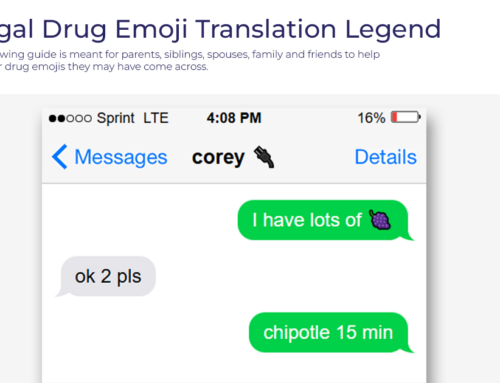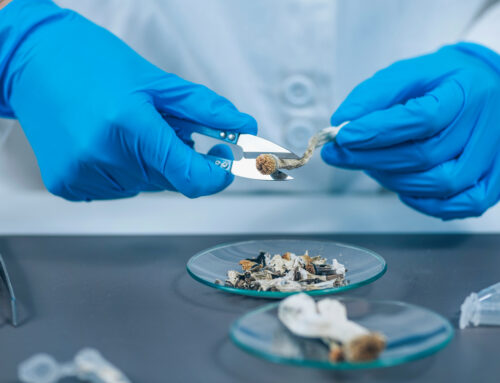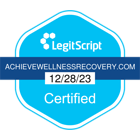Just when it seemed like New Jersey had emerged from the OxyContin addiction crisis, illegally manufactured fentanyl began to hit the streets. If you’re currently using illicit drugs or know someone who is — you need to read this.
In this article, you will learn about the dangers of fentanyl and how to tell if there is fentanyl in a pill or powder before someone uses it.
How Fentanyl Has Changed The Overdose Threat Forever
Once upon a time, the biggest overdose concern that opioid users and their families had was simply taking too much after a period of lower use or getting an extra potent heroin bundle. That was frightening enough, especially when you combine OD risk with all of the other harm that opioid abuse entails.
The introduction of fentanyl (and now carfentanil) into street drugs has made illicit drug use in New Jersey and the rest of America more dangerous than ever. Sadly, overdose deaths continue to climb, and the presence of fentanyl in counterfeit painkiller tablets, heroin, cocaine, and even molly (MDMA) is a major reason why.
Fentanyl has changed the overdose threat because:
- Fentanyl is so much more potent than any conventional drug that it is extremely easy to overdose on unintentionally.
- Fentanyl is much cheaper and easier to make than real molly (MDMA) and most other drugs, including heroin — that means it can be found almost anywhere now.
- People using drugs like molly (MDMA), LSD, or painkiller tablets are usually not worrying about overdose, which makes them even more vulnerable to fentanyl.
How Do You Know If Something Has Fentanyl In It?
It probably goes without saying that if you suspect a substance may contain fentanyl, the safest decision is not even to touch it, much less use it. But — we still need to say it. Fentanyl and carfentanil are incredibly potent drugs. Merely touching fentanyl can allow it to enter your bloodstream.
But if you have a pill or powder and you insist on knowing if there is fentanyl in it —- there is a way you can tell safely. Fentanyl test strips. These test strips have been available for several years, though hard to get. Through the efforts of federal and state governments eager to reduce fentanyl overdose deaths, it has recently become much easier to get hold of fentanyl test strips.
How to Test for Fentanyl in a Substance
Again, the safest choice is to carefully dispose of or destroy the substance, not touching it with bare skin or inhaling even the smallest amount. If you’re unsure what to do, you can also bring it to the local police station.
With that said, we know that some people will want to test a substance themselves. We strongly recommend that you destroy the substance rather than testing for fentanyl, but if you choose to check it for fentanyl — you must do it as safely as possible.
Testing a substance for fentanyl:
- Get nitrile or latex gloves — NEVER handle any substance you suspect may contain fentanyl with your bare hands.
- Wear any other available PPE, such as a mask, goggles, or other eye protection.
- Get fentanyl test strips. The New Jersey Harm Reduction Coalition will mail them to you for free.
- Dissolve a small amount of the substance in water inside a clean container according to the directions on the fentanyl test strip package.
- Lay the test strip on a flat, clean, non-absorbent surface and wait at least 5 minutes.
- Check the results per the instructions on the package. Most fentanyl test strips show one line if fentanyl is present and two lines if it isn’t.
If fentanyl is indicated — carefully dispose of or destroy all of the substance in a way that other people/children/pets cannot get to it, or bring it to the nearest police station.
What Drugs Have Fentanyl or Carfentanil in Them?
Many people mistakenly believe that only heroin has fentanyl or other dangerous substances like carfentanil or xylazine (tranq) in it. Nothing could be further from the truth. Anyone who believes they are safe from fentanyl or xylazine by not using heroin is making a dangerous mistake that could cost them their life.
The tragic fact is that the criminal organizations that make billions manufacturing and smuggling drugs have realized they have maximized their profits by cutting nearly everything with fentanyl or carfentanil. Unfortunately, fentanyl is easier and cheaper to manufacture than most other drugs and easier to smuggle.
Who Are You Trusting With Your Life?
Remember, when you take a drug, you are not only trusting the person who sold it to you. You’re also choosing to trust everyone else involved in getting it to you, including the criminals who made it. You’re wrong if you think they care about you or your loved one’s life.
Drugs that often contain fentanyl or other dangerous substances include:
- Fake painkiller tablets (Oxycodone, Roxis, Vicodin, Percocet, etc.)
- Powder cocaine or crystal meth
- Molly, AKA Ecstasy or MDMA
- Fake Adderall or Ritalin tablets
- Fake Xanax bars or other phony benzos
- THC or Psilocybin (shroom) gummies.
- LSD, AKA acid.
Achieve Freedom from Addiction in New Jersey
When you’re caught up in the undertow of active addiction, sobriety can seem impossibly out of reach. The truth is that millions of people, including tens of thousands of people in New Jersey, recover from addiction every year. There’s no reason why you or your loved one couldn’t be one of them. But we can only help if you call.
Call us now: (833) 680-0142
You can also click here to find out how our program can work with your insurance.








